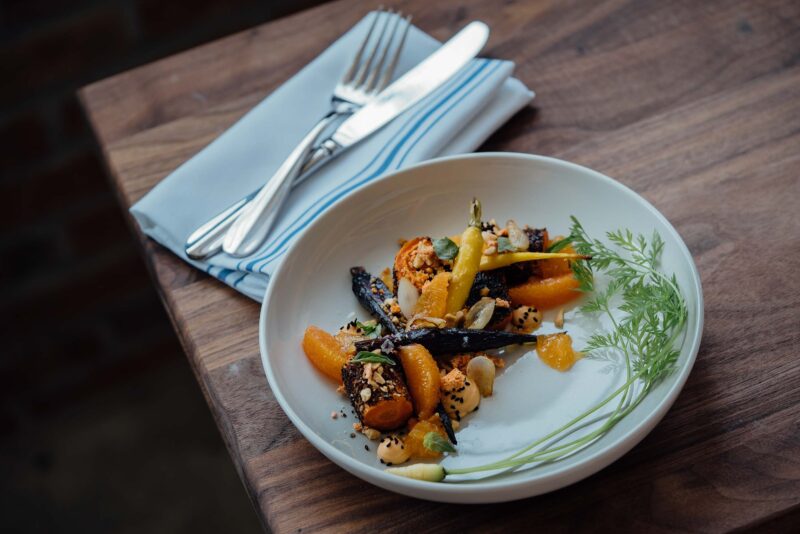I am both too young and too new to the restaurant industry to have had the chance to experience the Nouvelle Cuisine being constructed, one chef at a time, in the 70s in France. At the heart of this novel movement was none other than the recently formed Gault&Millau guide, also known as Le Nouveau Guide. The movement, whose principles were lighter, more visually pleasing and intelligently cooked food, was a major turning point for high-end dining. The revolution persisted, as every country started modernising its cuisine.
It is difficult to imagine how luxury restaurants were before the Nouvelle Cuisine movement. Thankfully, there were both photographs and food critics to make it easier for our imagination. For us, millennials, even restaurants with starched, white tablecloths are a thing of the past, a somehow astonishing relic that still feeds hungry die-hards. As pompousness surrenders to modernity and hipsters, where is fine dining heading, after all?
I still remember the fascination that besieged me as I indulged in my first fine dining meal. The eight-course tasting menu was a delight to all senses. It felt like the servers sang chants that listed uncountable elements and ingredients that made up every dish. There were pairings that my novice palate had never deemed possible. In all that time, I prayed that my memory would function well enough to remember at least half of all that information. For a while afterwards, that was what I imagined fine dining to be.
Last year, I had the chance to dine at Ikoyi, where I tasted what for me was among the most iconic dishes that circulated on social media in 2019. The dish, a fried plantain coated in raspberry powder, sitting next to a quennelle of scotch bonnet mayo, represents the pinnacle of modern day fine dining. Simplicity has spread like wildfire in kitchens around the world (especially after the Nordics took the crown of culinary innovation) and it is not stopping here.
Rasmus Munk’s perfect omelet is yet another perfect example of simplicity: a simple quennelle of egg, topped with lardo and truffle. But, just as Rome wasn’t built in a day, neither was that omelet, for it required extensive research and the understanding of food and its transformation on a chemical, molecular level, as well as a high degree of experimentation.
As food continues to grow as an art form, so does its impact. Chefs are becoming activists, food is becoming political and the power of stories will keep flourishing in this new culinary revolution. Munk’s tasting menu creates a theatrical experience, all while raising awareness of today’s pressing issues, like pollution, climate change, inclusion and equality, and the idea of a restaurant without a bin is no longer pure fantasy. The modern, high-end restaurant no longer appeals to the pretentious gourmand, but to the curious and responsible diner.
Since the disappearance of pansies and other garnishes from the fine dining plate, previously used to make dishes look more instagrammable rather than tasty, chefs started looking into a new direction. I am told by multiple chef friends that their responsibility is to honour the ingredients they use. As a matter of fact, this new culinary revolution is about taking a few steps forward and a couple back. It is small producers and farmers who are now receiving the ‘rockstar’ status. Strolls through the local markets in search for the best produce are becoming a routine for ambitious chefs. Wholesale businesses are slowly disappearing from the picture. And finally, a new wave of minimal intervention on high-quality ingredients is taking over kitchens around the world.
The role of food critics is going through a major transformation too. With pompousness fading away, so is the conventional restaurant review. More and more food journalists are starting to look at food from a perspective more suitable to today’s socio-economic context. Giving food back its central place in our society, requires a somewhat political stance from the food writer. The result are stories that revolve around meaning, morals and ethics, that unveil scandals or discuss how food impacts communities.
Restaurant guides are also pressured to rethink their models. Who, from the Michelin guide in the 50s, would have thought that a food stall would ever receive a Michelin star? Or that chefs would beg the guide not to include them in? As journalists uncover some of the dark corners of these guides, lists and awards, taking a more meaningful direction is the only way to avoid becoming obsolete. I am still waiting for the guide that will award restaurants not only for their exceptional food, but also for the impact they have upon the community they are part of. And there’s no reason why fine dining wouldn’t have a place there.
The new decade is a very exciting time for the world of fine dining. Innovation, technology and solving climate change will undeniably prevail in this new culinary revolution. But so are meaningful connections, stories with a purpose and a return to beauty through truthfulness, rather than garnishes and pomp.



